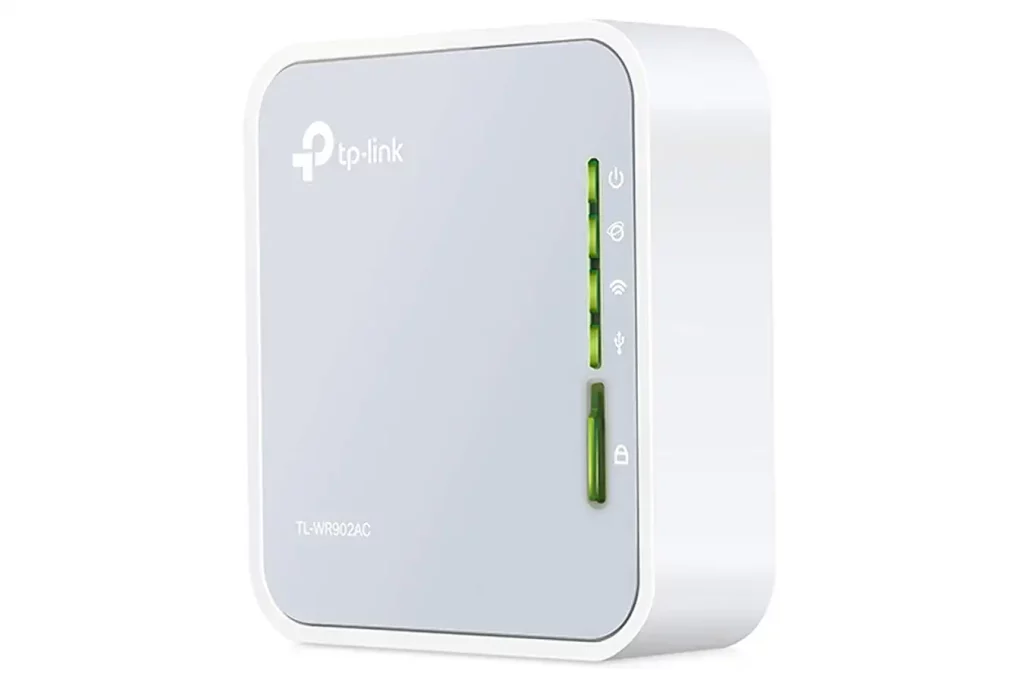Pondering over how to get WiFi while camping?
As a dedicated blogger and seasoned outdoorsman, I’ve encountered this digital-age dilemma time and again during my wilderness adventures.
Over the years, I’ve discovered essential tips that ensure internet connectivity, enabling me to stay connected even amidst the enchanting isolation of the wild.
From the melodic backdrop of the forest rain to the hypnotic dance of the campfire, let’s explore how you can enjoy these untamed beauties without losing touch with the wired world.
Join me as I guide you on this trail of balance, harmonizing our love for the great outdoors with the need for digital access.
Understanding the Basics
Before diving into the solutions, let’s understand some basic principles of how WiFi works and what factors can affect its availability while you’re camping.
How WiFi Works: A Simplified Overview
WiFi is a form of radio wave, just like the FM stations you tune into with your car radio. When you’re at home or work, your devices connect to a router, which transmits these radio waves. Your device, say your laptop or smartphone, catches these waves with a wireless adapter and translates them into the data you see on your screen.
But when you’re out in the wild, there’s no router to connect to, which is the main challenge of getting WiFi while camping.
Factors Affecting WiFi Connectivity Outdoors
Several factors can affect your ability to get WiFi when you’re camping. The major one is distance from a WiFi source. The further away you are, the weaker the signal.
Terrain and obstacles also play a part. Mountains, hills, trees, and even weather can interfere with your signal. So, the topography of your camping site may affect your WiFi connectivity.
WiFi Availability in Campgrounds
Stepping into the vast expanses of nature doesn’t necessarily mean you have to leave all modern conveniences behind. Many campgrounds offer WiFi facilities, but it’s important to understand what you’re signing up for.
Expectations vs. Reality: Public WiFi in Campgrounds
Let’s set some expectations straight. While many modern campgrounds do provide WiFi, it’s often not as reliable or fast as your home connection. Think of it like the WiFi at a busy coffee shop — it works, but it might not stream your favorite show in high-definition without some buffering.
Furthermore, the WiFi signal is usually stronger near the main building or common areas. So, if your tent is set up farther away, your connectivity might be spotty.
Limitations and Advantages of Public Campground WiFi
Public campground WiFi, while convenient, has its limitations. As we mentioned, the signal strength often diminishes the further away you are from the source, and the speed may not be optimal. Additionally, when more campers connect to the network, it can slow down the connection for everyone.
However, there are advantages too. If you’re only looking to send a few emails, check the weather, or perform other low-data tasks, it should serve you just fine. Plus, it’s typically included in your campground fee, so there’s no extra cost involved.
Portable WiFi Devices
For those who need a reliable internet connection, portable WiFi devices like mobile hotspots and routers can be a game-changer. These devices offer a more dependable way to stay connected in the wild.
Overview of Mobile Hotspots and WiFi Routers
Mobile hotspots, also known as pocket WiFi, work by connecting to cellular networks, much like your smartphone. They then create a WiFi network to which you can connect your devices. This allows you to access the internet anywhere you have a cellular signal.

WiFi routers, on the other hand, are typically used with a dedicated data plan or SIM card and can provide a stronger, more stable connection. However, they are usually larger and require a power source, which may not be as convenient when camping.
Comparison: Pros and Cons of Various Portable WiFi Devices
Portable WiFi devices can vary greatly in terms of cost, data limits, battery life, and the number of devices they support. Some are compact and convenient, perfect for light internet use. Others are more robust, providing faster speeds and supporting more devices, but might be bulkier and require charging.
When choosing between these options, you’ll need to consider your specific internet needs, how many people will be using the device, and how much you’re willing to spend.
Buying Guide: What to Look for in a Portable WiFi Device
When choosing a portable WiFi device, consider the following:
- Data Plans: Check the data plans available. Some offer unlimited data, while others have caps. Think about your internet needs and choose accordingly.
- Battery Life: Look for a device with a long battery life, especially if you’ll be away from power sources for extended periods.
- Coverage: Check that the device can connect to networks in the area you’ll be camping.
- Number of Devices: If you’re camping with a group, consider a device that allows multiple connections.
- Cost: Prices can range from budget to high-end. Choose a device that fits your budget and meets your needs.
Remember, staying connected while camping doesn’t mean you’re not embracing the wilderness. It’s all about finding the right balance and being prepared.
Using Your Smartphone as a Hotspot
Your smartphone can serve as a handy device to keep you connected while camping. If you’ve never tried it before, don’t worry, turning your phone into a WiFi hotspot is easier than you might think!
Steps to Turning Your Phone into a Hotspot
Most smartphones, whether iOS or Android, have a built-in feature that allows them to serve as a portable WiFi hotspot. Here’s a simple step-by-step guide:
- Go to your phone’s settings: This is typically represented by a gear icon.
- Locate the ‘Personal Hotspot’ or ‘Mobile Hotspot’ feature: This is usually found under ‘Network & Internet’ on Android or ‘Cellular’ on iOS.
- Turn on the hotspot: You may need to set a password to secure your network.
- Connect your other devices: Search for your phone’s network on your other devices and enter the password.
Managing Data Usage and Battery Life
However, keep in mind that using your phone as a hotspot can consume a significant amount of data and drain your battery life. To manage this, try to limit activities that require a lot of data, such as streaming videos. Also, consider investing in a portable charger to keep your phone powered up.
Satellite Internet Options
For those venturing into more remote areas where cell service is limited, satellite internet can be a viable solution.
Explaining Satellite Internet: Pros and Cons
Satellite internet works by transmitting data between a satellite dish and an orbiting satellite. Its main advantage is its wide coverage — as long as you have a clear view of the sky, you can access the internet.
However, there are downsides. Satellite internet can be costly, slower than other options, and vulnerable to weather interference. Also, the equipment is bulkier than a mobile hotspot or WiFi router.
Recommended Satellite Internet Providers for Campers
Providers such as HughesNet and Viasat are popular choices among campers for their extensive coverage. Keep in mind that these providers usually require a contract, so this option may be best for frequent or long-term campers.
Tips for Maximizing WiFi Signal While Camping
Regardless of the option you choose, there are ways to enhance your internet experience while camping.
Positioning for Better Reception
The location of your device can have a significant impact on signal strength. Whether you’re using a hotspot or a router, try to position the device higher and with a clear line of sight to the sky. Avoid placing it near metal objects, which can interfere with the signal.
Using WiFi Boosters and Extenders
WiFi boosters or extenders can also improve your WiFi signal. They work by receiving the existing signal, amplifying it, and then transmitting the boosted signal. While it’s an extra piece of equipment to carry, it can be worth it if you require a stable and strong connection.
Overall, getting WiFi while camping can be achieved through using public campground WiFi, setting up your smartphone as a hotspot, employing portable WiFi devices like hotspots or routers, or utilizing satellite internet services.
So, there you have it! With a little planning and the right equipment, you can enjoy the tranquility of nature without sacrificing your digital needs.
The Balance: Connectivity and Enjoying Nature
Having internet access while camping can be a double-edged sword. While it can keep us connected and entertained, it can also distract us from fully immersing in the great outdoors. So how do we strike a balance?
Tips for Managing Screen Time While Camping
Here are a few suggestions to help you manage your screen time while camping:
- Designate specific internet times: Instead of constantly checking your devices, set specific times for browsing or catching up on work. This might be early in the morning or late in the evening.
- Use airplane mode: When you’re not using the internet, put your phone on airplane mode. It can help resist the temptation to check notifications every few minutes.
- Engage in outdoor activities: Spend more time hiking, bird watching, fishing, or just enjoying the serenity of nature. These activities can help reduce your screen time and make your camping experience more memorable.
Remembering the Purpose of Camping: Disconnect to Connect
Let’s not forget why we go camping in the first place. It’s an opportunity to break away from our regular routine, to embrace the peacefulness of nature, and to spend quality time with our loved ones. While staying connected is important, let’s ensure it doesn’t overshadow the true essence of camping: to disconnect from the digital world and connect with the natural world and those around us.
Learn more: How to Use a Backpack With a USB Charging Port
FAQs about Get WiFi While Camping
How do you get Wi-Fi in the middle of the woods?
What is the best Wi-Fi for camping?
How much does it cost for portable Wi-Fi?
How do I get portable Wi-Fi?
How can I get Wi-Fi when camping without cell service?
Conclusion to Get WiFi While Camping
Camping doesn’t mean you have to completely cut off from the rest of the world. Whether it’s a public WiFi in a campground, a portable WiFi device, using your smartphone as a hotspot, or even satellite internet, there are several ways to get WiFi while camping. However, managing screen time and remembering the true purpose of camping — to connect with nature and your loved ones — is equally essential.
As you plan your next camping adventure, take these tips into consideration. Striking a balance between staying connected and immersing in nature can significantly enhance your camping experience. After all, it’s about making the most out of every moment, both online and offline. Happy camping!
To know more: How to Make Your Backpack Lighter


